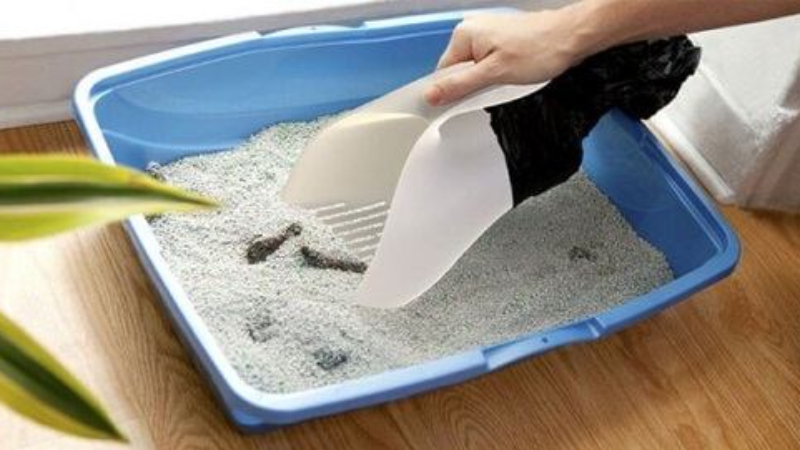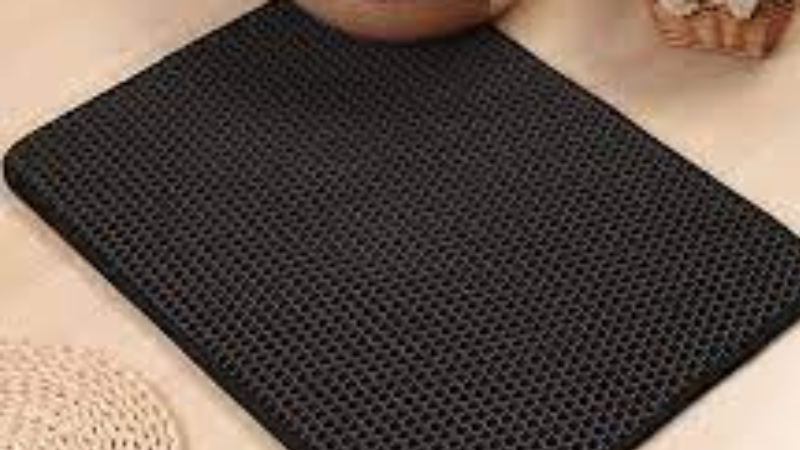Are you having trouble potty-training your furry friend? Don’t worry, it’s a common challenge for new pet parents. This guide will help you choose the perfect potty for your pup, making the process easier and less messy for both of you!

Potty trays for dogs are typically made of plastic or stainless steel, with square or rectangular shapes being the most common. The height of the tray’s walls is designed to contain messes without causing discomfort for smaller or shorter-legged dogs.
1. Types of Potty Trays for Dogs
Sand-Based Potty Trays
The sand used in these trays is absorbent, helping to reduce odors by soaking up urine. It can handle both solid and liquid waste. You can expect to pay around 15,000 – 20,000 VND per kilogram.
However, this type of sand doesn’t completely eliminate odors. If your dog has a habit of digging or displays coprophagia (eating feces), it’s best to avoid this type of tray.

Mat-Based Potty Trays
These mats are designed to quickly absorb odors and make cleanup a breeze. You can expect to pay around 150,000 – 200,000 VND for a pack of 40 – 50 mats.
However, keep in mind that these mats are not environmentally friendly as they are meant to be disposed of after use.

Grid Potty Trays
The grid design of these trays features evenly spaced holes that are sized appropriately for a dog’s paws.
You can choose between trays with lower or higher walls depending on your dog’s size. This design prevents waste from sticking to your dog’s body, reducing the mess and making cleanup easier. These trays are affordable and widely available.
However, if your dog seems uncomfortable using this type of tray, be sure to switch to a different option.

Artificial Grass-Mat Potty Trays
Using this type of tray gives your dog the sensation of doing their business in a garden, making it easier for them to adjust to using the tray.
However, it can be challenging to thoroughly clean the artificial grass mat, and some odors may linger. These trays are also more expensive, ranging from 300,000 to 500,000 VND depending on the size. If your dog likes to dig, they might end up destroying this pricey option.

2. How to Choose a Potty Tray for Your Dog
Consider Your Living Space
Select a potty tray that suits the size of your home and the area where your dog is kept. Avoid choosing a tray that’s too big or too small, especially if you have a puppy that will grow quickly.

Choose Based on Your Dog’s Size
When picking a potty tray, consider the expected adult size and dimensions of your dog.
For male dogs, opt for a tray with higher walls or add plastic stakes to accommodate their natural marking behavior and prevent messes.
For female dogs, you have the option of choosing a tray with lower walls, depending on your dog’s comfort and preferences.
Choose Accessories

Scent Spray: If your dog is struggling to adjust to the tray, consider using a scent spray that mimics the smell of their waste. This can help them associate the tray with the appropriate place to relieve themselves.
Dog Waste Cleaning Tools: Invest in specialized tools to make cleaning up after your dog more hygienic and less messy.
Choose Based on Your Dog’s Gender
For male dogs, opt for a tray with higher walls and plastic stakes to prevent messes. For female dogs, lower walls and no stakes are usually sufficient.
3. Potty Training Your Dog
 Potty Training Your Dog
Potty Training Your Dog
To encourage your dog to use the tray, soak a piece of paper in their urine and place it in the tray. Position the tray near their crate, and teach them commands like “Go to the tray” or “Potty time.”
When you notice your dog exhibiting pre-potty behaviors like pacing or circling, gently guide them to the tray and give the command.
4. Important Notes When Using a Potty Tray for Your Dog
 Important Notes
Important Notes
Use Tray Liners or Sand: Absorbent liners or sand help contain waste and odors, making cleanup easier.
Regularly Clean the Tray: Keeping the tray clean not only reduces odors but also maintains hygiene for your dog. Dogs naturally prefer clean spaces for their bathroom needs, so regular cleaning is essential.
Choose the Right Tray for Your Dog: Ensure your dog is comfortable and can easily use the tray to encourage proper potty habits.
For more tips and tricks, be sure to check out our website.
Discover the top-rated dog shampoos on our site as well!
In conclusion, this guide has provided you with detailed insights into choosing the right potty tray for your dog. We hope it helps you create a comfortable and mess-free potty experience for your furry friend!

































